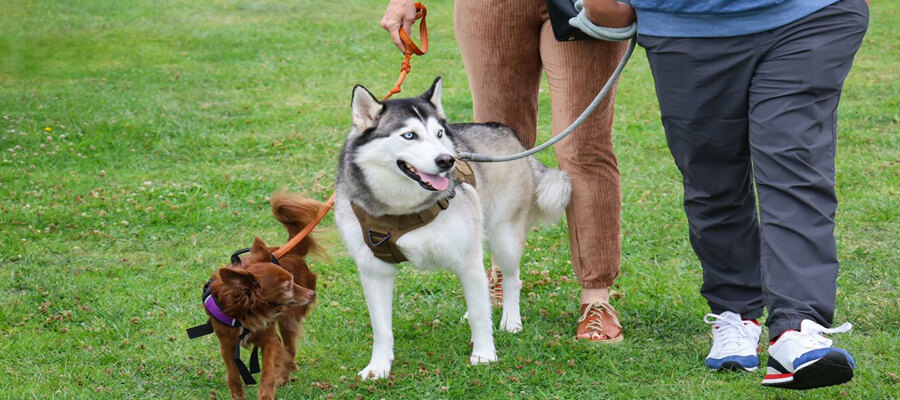
How to Manage Your Dog’s Weight with Diet and Exercise
Manage Your Dog’s Weight with Diet and Exercise
Introduction
Maintaining a healthy weight is crucial for your dog's overall well-being and longevity. Just like humans, dogs can face a range of health issues due to obesity, including joint problems, diabetes, and heart disease. As a responsible pet owner, it’s important to understand how to manage your dog’s weight through a balanced diet and regular exercise. In this comprehensive guide, we will explore effective strategies to help you keep your furry friend at a healthy weight, ensuring they lead a happy and active life.
Understanding Your Dog’s Ideal Weight
Before you can manage your dog's weight, it's essential to know what their ideal weight should be. This can vary widely based on breed, age, and size. Here are some general guidelines:
- Consult Your Veterinarian: Your vet can provide an ideal weight range based on your dog's breed and health status.
- Body Condition Score (BCS): This scoring system helps evaluate whether your dog is underweight, ideal weight, or overweight. It assesses factors such as rib visibility, waist definition, and abdominal tuck.
BCS Chart Overview:
Essentials for Your Newly Adopted Pet
Welcoming a shelter pet into your life is a beautiful journey. Here are some handpicked items to help your new friend feel safe, loved, and right at home:
- 1-2/9: Underweight
- 3-4/9: Ideal weight
- 5-6/9: Overweight
- 7-9/9: Obese
Regularly monitoring your dog’s weight and body condition can help you catch any potential issues early.
The Role of Diet in Weight Management
A balanced diet plays a crucial role in maintaining your dog's weight. Here are some tips on how to choose the right diet for your furry friend:
- High-Quality Dog Food: Choose dog food that lists high-quality protein as the first ingredient. Avoid fillers like corn, soy, or artificial additives.
- Portion Control: Follow the feeding guidelines on the dog food packaging but adjust portions based on your dog's activity level and body condition. Your vet can help determine the right amount to feed.
- Regular Feeding Schedule: Establish a consistent feeding schedule. Avoid free-feeding (leaving food out all day) to prevent overeating.
- Limit Treats: Treats can add up quickly in calories. Aim to give no more than 10% of your dog's daily caloric intake in treats. Opt for healthy options like carrot sticks or small pieces of apple.
- Consider Weight Management Food: If your dog is overweight, consider switching to a weight management formula designed to help dogs lose weight while still getting the nutrients they need.
Incorporating Exercise into Your Dog’s Routine
Exercise is essential for maintaining a healthy weight and overall fitness. Here are some ways to incorporate physical activity into your dog’s daily routine:
- Daily Walks: Aim for at least 30 minutes to an hour of walking each day, depending on your dog's breed and energy level. This can be split into multiple shorter walks if needed.
- Playtime: Engage your dog in interactive play, such as fetch, tug-of-war, or frisbee. This not only burns calories but also strengthens your bond with your pet.
- Dog Sports: Consider enrolling your dog in agility, flyball, or other dog sports that provide physical and mental stimulation.
- Swimming: Swimming is a great low-impact exercise for dogs, especially those with joint issues. Always supervise your dog around water.
- Training Sessions: Use training sessions as an opportunity for physical activity. Teach your dog new tricks or commands while keeping them moving.
Monitoring Progress and Adjusting as Needed
Regularly tracking your dog's weight and body condition is essential for effective weight management. Here are some tips:
- Weigh Your Dog: Weigh your dog every month to monitor changes. Make adjustments to their diet and exercise routine as needed.
- Keep a Journal: Maintain a weight management journal that logs your dog’s weight, feeding schedule, and exercise routine. This will help you identify patterns and make necessary adjustments.
- Be Patient: Weight loss should be gradual. Aim for a weight loss of 1-2% of your dog’s body weight per week. Rapid weight loss can lead to health issues, including liver problems.
Signs Your Dog May Need to See a Vet
If you notice any of the following signs, it may be time to consult your veterinarian:
- Rapid weight gain or loss
- Changes in appetite
- Lethargy or lack of interest in activities
- Difficulty in breathing
- Joint pain or difficulty moving
Conclusion
Managing your dog's weight through a combination of a balanced diet and regular exercise is essential for their overall health and quality of life. By understanding your dog’s ideal weight, providing high-quality nutrition, and incorporating an engaging exercise routine, you can help your furry friend maintain a healthy weight and live a happy, active life. Always consult with your veterinarian to tailor a weight management plan that suits your dog's individual needs, ensuring they stay fit and healthy for years to come.
Affiliate Products
We may earn a small commission when you shop through our links — it helps us keep sharing love and care for every dog out there, at no extra cost to you.
Up to 75% Discount

Dog Collar with Health Monitoring
BUY NOW »
Up to 55% Discount

Luxury Faux Furhuge Napping Bed
BUY NOW »

